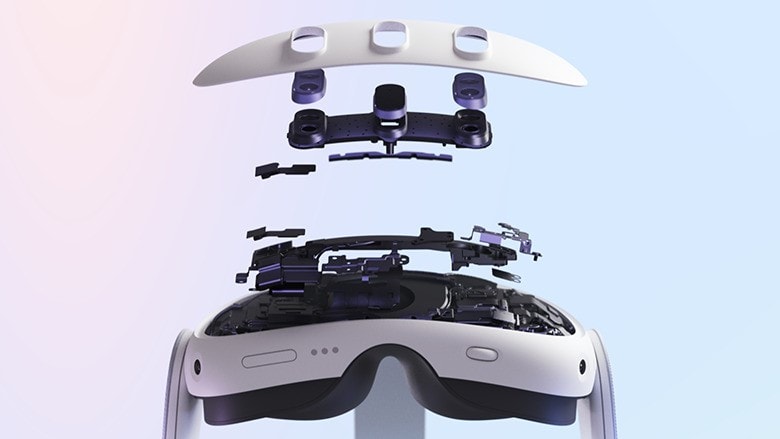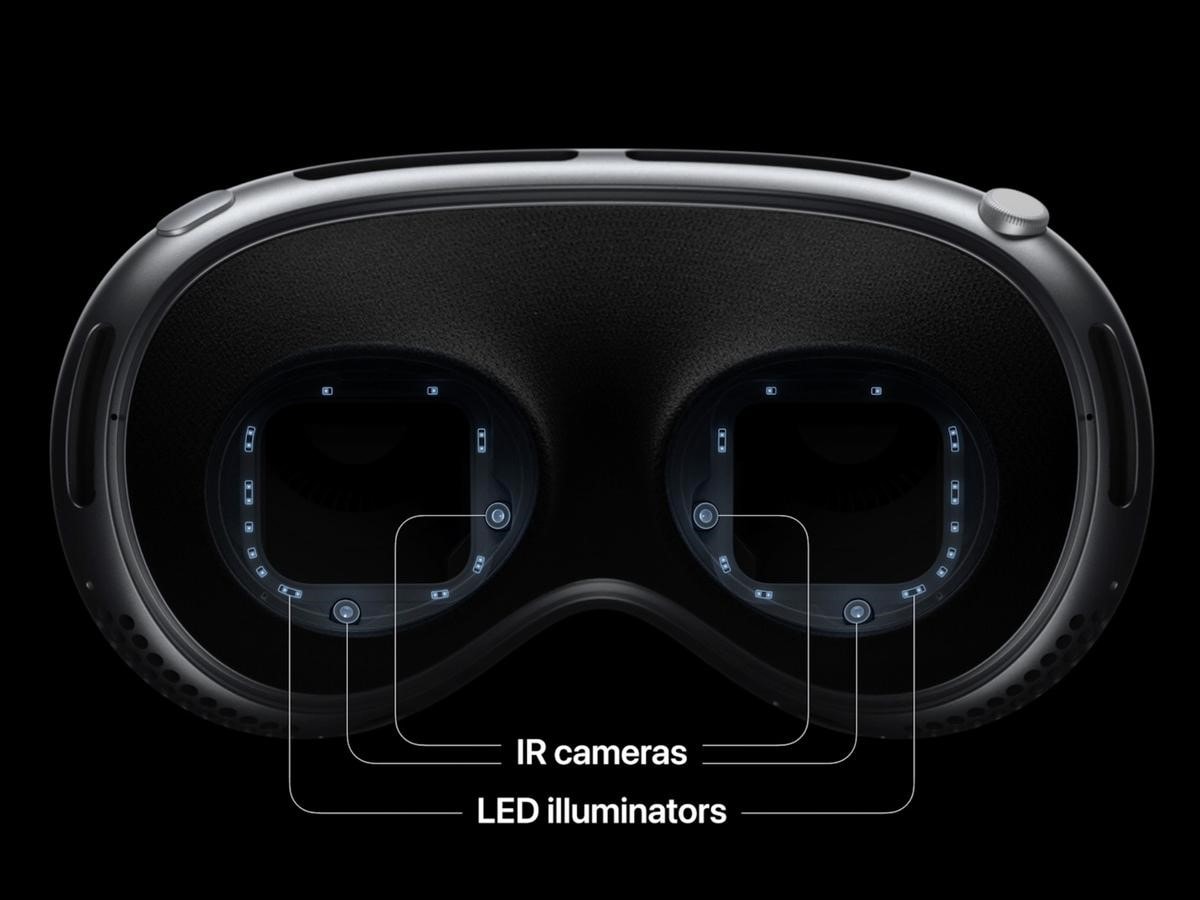The ARVR landscape is experiencing a furious war for supremacy, with Apple’s Vision Pro and Meta’s Quest 3 leading the charge. These cutting-edge headsets promise to transform our digital interactions, with each bringing unique features to the table. In this in-depth comparison, we’ll go over every element to help you navigate the complex world of Augmented and Virtual Reality and find out which one suits you requirement. Check out the details.

Apple Vision Pro vs. Meta Quest 3: Detailed Comparison
Display Brilliance
The Apple Vision Pro features micro-OLED screens that give an astounding 4K resolution per eye and HDR for superb contrast. The colors are vibrant, the blacks are deep, and the text is razor-sharp, resulting in a visually stunning experience. On the other hand, the Meta Quest 3 has a nice 2K+ LCD per eye and a 120Hz refresh rate. While it lacks the Vision Pro’s pixel density, and its images are buttery-smooth, making it excellent for fast-paced gameplay.


Processing Power
Under the hood, the Vision Pro flexes its muscles with a proprietary M2 chip co-powered by Apple’s R1 chip developed from the MacBook Pro’s processor. This results in seamless multitasking and lag-free rendering, ideal for demanding professional applications. In comparison, the Quest 3 uses the Snapdragon XR2 Gen 2 chip, which prioritizes mobile efficiency for standalone VR gaming. While it may not have the raw power of the Vision Pro, its wireless freedom and improved VR performance make it a viable option.
Design Dilemma
The Vision Pro has a sleek, minimalist design with excellent materials, but there are concerns about its comfort during extended use. In contrast, the Quest 3 promotes comfort, with a lightweight, balanced design and better ergonomics. The fabric-covered faceplate and adjustable straps allow for longer immersion without fatigue.
Field of View
In the contest for peripheral awareness, the Quest 3 takes the lead with a larger 120° FOV than the Vision Pro’s estimated 100°. While the Vision Pro compensates with greater display quality, the Quest 3’s larger field of view offers a more immersive, natural experience.
Mixed Reality Approaches

Both headsets support Mixed Reality, but take different techniques. The Vision Pro depends largely on outward-facing cameras to provide seamless real-world and virtual integration, making it ideal for productivity and augmented experiences. In contrast, the Quest 3 uses inward-facing eye tracking, allowing for natural hand interactions and intuitive object manipulation in VR.
Controller Ecosystem Clash
The Vision Pro uses specialized controllers similar to standard gamepads, providing familiarity to experienced users. In contrast, the Quest 3 includes improved hand-tracking technology, including intuitive motions and finger-pinch interactions for a more natural and immersive control system.
Content and Ecosystem
The Vision Pro works within Apple’s selected environment, which ensures quality and smooth interaction. However, this is at the expense of variety and accessibility. The Quest 3, which embraces an open platform, has a large library of VR content from many creators. While quality may vary, the open method ensures a more diverse selection of options.
Pricing Comparison
The Apple Vision Pro has premium pricing starting from $3499 to a whopping $3999, aimed at professional customers and early adopters with substantial pockets. On the other hand, the Quest 3 maintains an affordable price point starting at $499 for the base variant to $649 for the 512 GB variant, which democratizes VR technology and makes it more accessible to the general public.
Declaring a clear winner proves difficult because both headsets appeal to different purposes and audiences. The Vision Pro shines in terms of display quality, processing power, and sleek design, making it suitable for people looking for a premium experience within a closed ecosystem. Meanwhile, the Quest 3 focuses on comfort, affordability, and a larger content library, attracting people who favor accessibility and an open platform.
Go for Apple Vision Pro if:
- Display quality and pixel fidelity are the highest concerns.
- Demanding professional applications necessitates cutting-edge processing capability.
- A streamlined design and a specialized controller ecosystem are preferred.
- Comfort in a confined ecosystem with curated content is okay.
- Money is not a concern.
Go for Meta Quest 3 if:
- Comfort, lightweight design, and cost are essential.
- You prefer standalone VR with wireless freedom.
- A larger field of view is essential for a more immersive experience.
- Intuitive hand-tracking controls and an open platform with a wide range of content options are sought.
- Pricing is a concern.
Ultimately, the best option is determined by your specific requirements, budget, and objectives. As you begin your ARVR journey with this knowledge, keep in mind that the actual champion is the headset that smoothly interacts with your specific digital goals.
Beyond the Specifications: A Glimpse into the Future.
While we’ve covered the current comparison, the future of ARVR holds even more intriguing possibilities. Both Apple and Meta are currently engaged in ground-breaking research and development, teasing breakthrough features like Brain-Computer Interfaces (BCIs) for deeper immersion and intuitive object handling.
Haptic feedback and sensory augmentation are on the horizon, giving users the ability to touch, feel, and even smell the virtual world. Social ARVR encounters are expected to become more prevalent, with collaborative tools and realistic avatars enabling new types of communication and interaction.
The full potential of ARVR goes beyond gaming and entertainment, with implications for education, healthcare, design, and a variety of other industries. As Apple and Meta push the envelope, the search for the perfect ARVR experience continues, paving the door for a future in which the digital and physical worlds meld seamlessly.
Wrapping It All
Overall, whether you choose the Vision Pro’s cutting-edge technology or the Quest 3’s accessibility, keep in mind that you’re not just buying a headset; you’re investing in a peek of the future. The possibilities are as limitless as your imagination, and as both firms continue to innovate, the ARVR landscape will shift, revealing new horizons.
So, whether you’re drawn to the Vision Pro’s power or the Quest 3’s inclusion, your adventure into the world of ARVR begins today. Choose wisely, and embrace the exciting future that lies ahead in an ever-changing technological universe.






